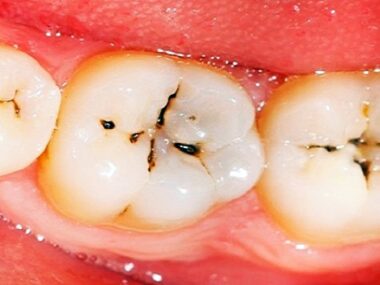Tongue tie, or ankyloglossia, is a situation characterised by an abnormally quick, thick, or tight frenulum (the band of tissue connecting the underside of the tongue to the ground of the mouth), which restricts the motion of the tongue.
Immediate and correct analysis of tongue tie is essential for figuring out people who could profit from intervention to handle feeding difficulties, speech impairments, or different related points.
This essay goals to discover the assorted strategies and procedures utilized by healthcare professionals to diagnose tongue tie.
Medical Evaluation

The scientific evaluation of tongue tie entails a complete analysis of the tongue’s look, mobility, and performance. Healthcare professionals, together with paediatricians, lactation consultants, speech therapists, and otolaryngologists, could carry out the next assessments:
- Visible Examination: A visible inspection of the tongue to evaluate the looks of the frenulum, together with its size, thickness, and attachment to the tongue and flooring of the mouth. A brief, thick, or visibly restricted frenulum could point out tongue tie.
- Purposeful Evaluation: Statement of the tongue’s variety of movement and mobility throughout varied actions, corresponding to protruding the tongue, lifting it to the roof of the mouth, and transferring it back and forth. Restricted motion or problem performing these actions could recommend tongue tie.
- Feeding Analysis: Evaluation of breastfeeding or bottle-feeding dynamics to establish difficulties with latch, milk switch, and maternal-infant bonding. Infants with tongue ties could have problems sustaining a deep latch, resulting in insufficient milk consumption and maternal nipple ache or harm.
- Speech Evaluation: Analysis of speech sound manufacturing, articulation, and oral motor coordination in older youngsters and adults with suspected tongue tie. Speech therapists could assess tongue mobility and performance throughout talking duties to find out if tongue tie is contributing to speech impediments or language delays.
Scoring Techniques
To standardize the analysis and severity grading of tongue tie, healthcare professionals could make the most of scoring techniques or evaluation instruments. These instruments present goal standards for evaluating the looks and performance of the frenulum, in addition to the effect of tongue tie on feeding, speech, and oral well-being. Generally used scoring techniques embrace:
- Hazelbaker Evaluation Instrument for Lingual Frenulum Operate (HATLFF): A validated software used to evaluate tongue performance and breastfeeding difficulties related to tongue tie. The HATLFF evaluates tongue mobility, look, and latch high quality to find out the severity of tongue tie and the necessity for intervention.
- Kotlow’s Tongue-Tie Evaluation Instrument (KTAT): One other scoring system used to gauge the looks and performance of the frenulum, in addition to its effect on feeding, speech, and oral hygiene. The KTAT assesses tongue mobility, frenulum attachment, and potential problems related to tongue tie.
Imaging Research
In some instances, imaging research could also be used to substantiate the analysis of tongue tie or assess the extent of the restriction. This research presents detailed anatomical data and will help information remedy choices. Imaging modalities that could be utilized embrace:
- Ultrasound: Actual-time ultrasound imaging can visualize the motion of the tongue and frenulum throughout varied oral duties, corresponding to sucking, swallowing, and protruding the tongue. Ultrasound can present worthwhile details about the frenulum’s thickness, attachment, and potential restriction.
- Magnetic Resonance Imaging (MRI): MRI could also be used to evaluate the anatomy of the tongue, frenulum, and surrounding oral buildings in instances the place detailed anatomical data is required. MRI will help establish the presence of tongue tie, assess its severity, and information remedy planning.
Diagnostic Challenges and Issues
Diagnosing tongue tie will be difficult on account of variations in presentation, subjective evaluation standards, and overlapping signs with different oral circumstances.
Moreover, tongue tie could coexist with different anatomical abnormalities or medical circumstances, additional complicating analysis and administration.
Healthcare professionals should contemplate the person’s scientific historical past, signs, and useful impairments when making an analysis and figuring out the necessity for intervention.
Conclusion
The analysis of tongue tie requires a multidimensional method, involving scientific evaluation, scoring techniques, and, in some instances, imaging research.
Healthcare professionals play an essential function in recognizing the indicators and signs of tongue tie, assessing its effect on feeding, speech, and oral well-being, and figuring out a suitable plan of action.
By using standardized evaluation instruments, using imaging modalities when obligatory, and contemplating the person’s distinctive wants and circumstances, healthcare suppliers could make correct diagnoses and facilitate well-timed interventions to handle tongue ties and enhance affected person outcomes.
Related Tags
Taiwo Olawuyi
Taiwo Olawuyi is a highly dedicated and passionate professional blogger, renowned for her ability to create captivating, informative, and engaging content in the realm of health and wellness. She holds a Bachelor's degree in Political Science from Olabisi Onabanjo University and a Master's degree in Adult Education from the prestigious University of Ibadan. Her profound passion for health and wellness, coupled with her unwavering dedication to her audience, serves as a constant source of inspiration and enlightenment for readers worldwide.










